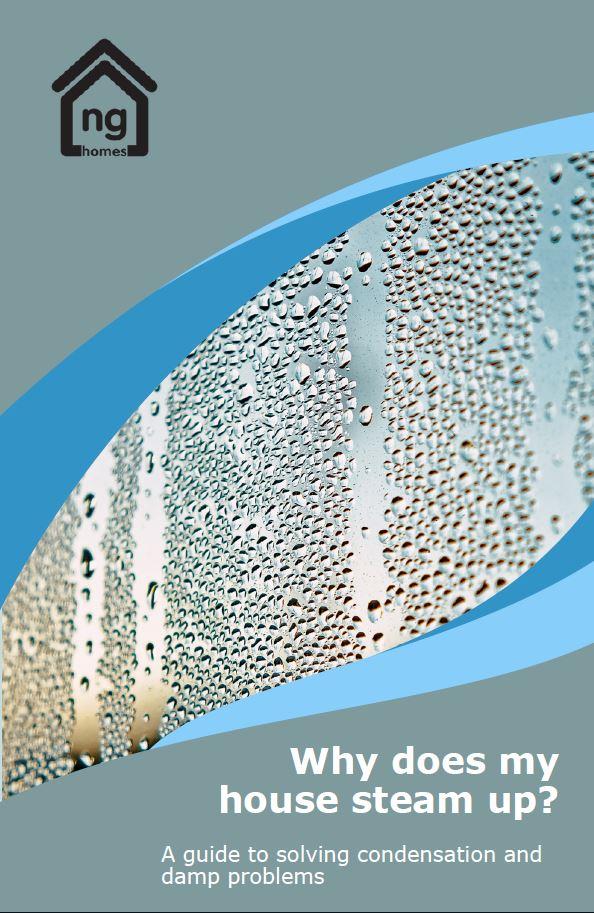Every home gets condensation at some time – usually when lots of moisture and steam are being produced such as bath times, when cooking meals or washing clothes. You may notice this as your windows steaming up when the heating is on or when you're cooking.
We have recently created an updated guidance leaflet which has steps you can take to reduce dampness, condensation, and mould in your home – and outlines our process if you call us to report an issue.
If you have any questions or concerns which you have yet to tell us about, please report them as soon as possible on 0141 560 6000.
What is condensation?
Temperature + Humidity = Condensation
Condensation happens when moist air touches a cool surface and forms water droplets. It can also happen when large pieces of furniture, for example wardrobes and beds, are placed against an outside wall.
The two coldest places in a house are generally the windows and the bottom of the outside walls usually close to windows. These are very common areas for condensation problems.
What is damp?
Damp refers to the presence of excess moisture in a room. This can show as:
• Condensation on your windows;
• Black mould on walls, around windows or on fabrics/soft furnishings;
• Staining rising from the floor or coming from a ceiling/window;
• A damp, musty smell in your home.
Dampness can occur when a property has been exposed to water. This can be caused by a leak from the roof, external walls, or other sources of water penetration.
What is mould?
Mould is a fungus which exists in the air and is only visible when the mould spores rest on a surface with high levels of moisture and only if left untreated.
Things you can do every day to help prevent dampness, mould and condensation
Do:
- Keep a window open when drying clothes indoors.
- Keep the kitchen door closed and lids on pots/pans when cooking.
- Keep the bathroom door closed when bathing or having a shower.
- Use an extractor fan in the kitchen and bathroom, if you have one, or ensure the window is open to allow the excess moisture and steam to escape.
- Ensure trickle vents on windows are open.
- Wipe down condensation or water droplets from walls, tiles, shower screens and windows and windowsills.
Don't:
- Dry items such as clothing over warm radiators.
- Overfill cupboards and wardrobes.
- Keep furniture and beds hard against walls or fill the room with bulk as this doesn’t allow air to circulate.
- Block ventilation fans or grills.
- Use flueless gas or paraffin heaters - these produce a lot of moisture and are a fire risk.
What to do if you have damp or mould in your home
You may find that the tips and advice in the guidance leaflet are of help. If you have any questions - from how to use the heating controls in your home to heating and energy support and advice - or any concerns you have not yet told us about, please get in touch with your Housing Officer on 0141 560 6000 or email us on info@nghomes.net





